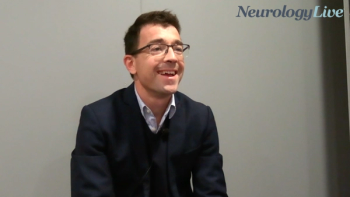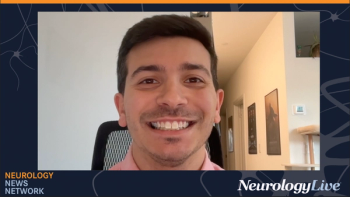
NeuroVoices: A. Jon Stoessl, MD, on Understanding Plasticity and Disease Trajectory in Parkinson Disease
The neurologist at University of British Columbia discussed how abnormal brain plasticity influences Parkinson progression and highlighted the importance of integrating basic science with clinical care.
Parkinson disease (PD) is a relentlessly progressive neurodegenerative disorder. The breakdown of compensatory mechanisms that influence putaminal dopamine processing may contribute to the progression of motor symptoms. In a previously published study, investigators analyzed a cohort of 78 individuals with sporadic PD and 35 healthy controls using multitracer positron emission tomography to examine the evolution of adaptive mechanisms affecting striatal dopamine processing over the course of disease progression. The findings from the study, conducted by senior author
Through this research and other studies, Stoessl has earned recognition as a leading neuroscientist whose work has greatly advanced the understanding and treatment of movement disorders. In acknowledgment of his contributions, he was named the recipient of the C. David Marsden Award Lectureship at the
In a new iteration of
NeurologyLive: Could you summarize your lecture and share the key takeaways you were trying to convey?
A. Jon Stoessl, MD: We're really interested, and have been for many years, in compensatory mechanisms in the brain in PD. Why do some people do better than others, and what degree of plasticity is that accessible to the brain? The latest thing that I talked about it this, we know that the brain is organized so that different anatomical regions of the body are represented in certain places, and that includes the striatum. Also, different functions are represented in parallel loops like motor, which everybody thinks about, but also cognitive function and reward function.
It's always been assumed that these anatomical and functional separations are segregated in the way they're represented in the brain, but nobody has really looked at this in PD per se. We set out to do studies to look at dopamine release in response to various stimuli, both looking at different parts of the anatomy, hand versus foot, but also motor versus cognition versus reward.
To sum it up, we found that whereas these things are separated in patients without PD, in healthy individuals. In PD, that separation breaks down. The implications may be many. First, the very fact that you have this segregation implies that an important part of the process is not so much in the substantia nigra, where the dopamine cells originate, but rather in the striatum, where they're projecting to because it's the striatum where there is this so-called somatotopic representation.
In addition, when you think about it, if you compensate for motor impairment by activating cognitive or reward centers in the brain, what happens when you have to do both? We know that in patients with PD, things break down when they attempt to multitask.
Over the past several years, there’s been a lot of discussion in neurology about reimagining the continuum of disease and what the conditions are, how does your work inform that thinking in PD?
You're touching on another issue, a very hot issue right now. How do we define disease? Historically, we've done this on clinical grounds, and there is now an increasing interest in looking at biological markers, which could include fluid markers or the seeding amplification assay to identify misfolded alpha-synuclein. But it can also include neuroimaging markers to look for evidence of denervation.
I would say this is an unresolved issue, with quite strongly held opinions on multiple sides, because most of us are clinicians, and so we find it difficult to push aside the idea of taking the clinical manifestations into account. But also, there are huge ethical issues. If you have somebody who's got nothing but a genetic predisposition or an abnormal lab test, do you really pull them into a room and say, “Guess what? You've got this disease,” especially if you don't really have a treatment to offer them?
This is all relevant to our work in some ways, in that we're looking to see whether lifestyle interventions can have an impact on the abnormal plasticity, on the abnormal wiring. If you could address that with like exercise, then you could actually have an impact on the course of the disease. It also probably has implications in terms of understanding the trajectory of the disease and why some patients are quite successful with their disease, if you will.
Over a career, seeing thousands of patients with PD, no 2 are exactly alike. Why is it that some patients do remarkably well, whereas others go through a very difficult time? In general, understanding why some people do well with disease may end up being more informative than looking at all the negative aspects. It’s a great way of understanding what it is that happens, because we do have either intrinsic or extrinsic defenses and so to better appreciate those could have a big impact.
When it comes to your career, how important is it to come to a place like MDS and collect a lot of information from your colleagues to help inform how you can provide better care?
The society holds a special place in my heart. I joined the year the society started, and I am a co-author on a paper in the very first issue of Movement Disorders. But more to the point, I'm surrounded by wonderful colleagues. I work on a daily basis with wonderful colleagues. I've held a number of roles in the society, the most recent of which is as editor of the journal. That's been an enormous privilege. It's a great responsibility, but I get to work with the best people in the world, and I get to see what's happening before it's actually out there.
From your clinical perspective, what stood out to you as a highlight at MDS 2025?
I think probably a better understanding of the different ways in which people can get PD and how the trajectory can differ between individuals. From a care perspective, I think a better understanding of ways to address abnormal plasticity would be 1 example. There are nonpharmaceutical approaches to treatment, which is not in any way to denigrate the pharmaceutical approaches. It’s an incredibly important part of development, which can only occur in the face of a better understanding of the mechanisms that contribute to disease.
That's why the integration of basic science and clinical activity is so important. In fact, my own work, which I've done in conjunction with a physicist with whom I've worked for nearly 30 years, could not have been done without these multi- and interdisciplinary approaches.
Transcript edited for clarity.
REFERENCES
1. Nandhagopal R, Kuramoto L, Schulzer M, et al. Longitudinal evolution of compensatory changes in striatal dopamine processing in Parkinson's disease. Brain. 2011;134(Pt 11):3290-3298. doi:10.1093/brain/awr233
2. Stoessl J. C. David Marsden Lecture Award: Functional Reorganization and Compensation in Parkinson's Disease. Presented at: 2025 MDS Congress; October 5-9; Honolulu, Hawaii. Presidential Lectures.
Newsletter
Keep your finger on the pulse of neurology—subscribe to NeurologyLive for expert interviews, new data, and breakthrough treatment updates.



































